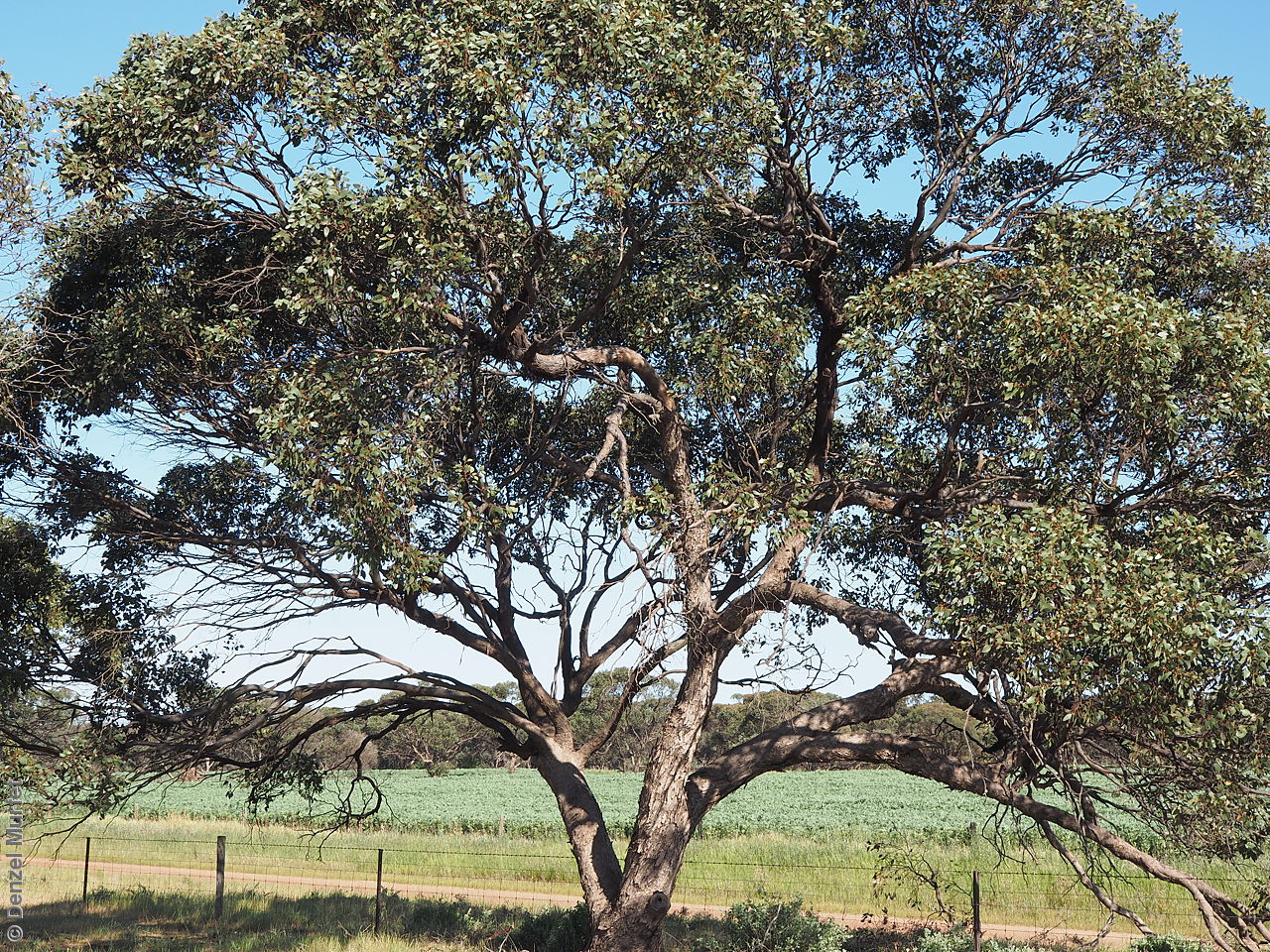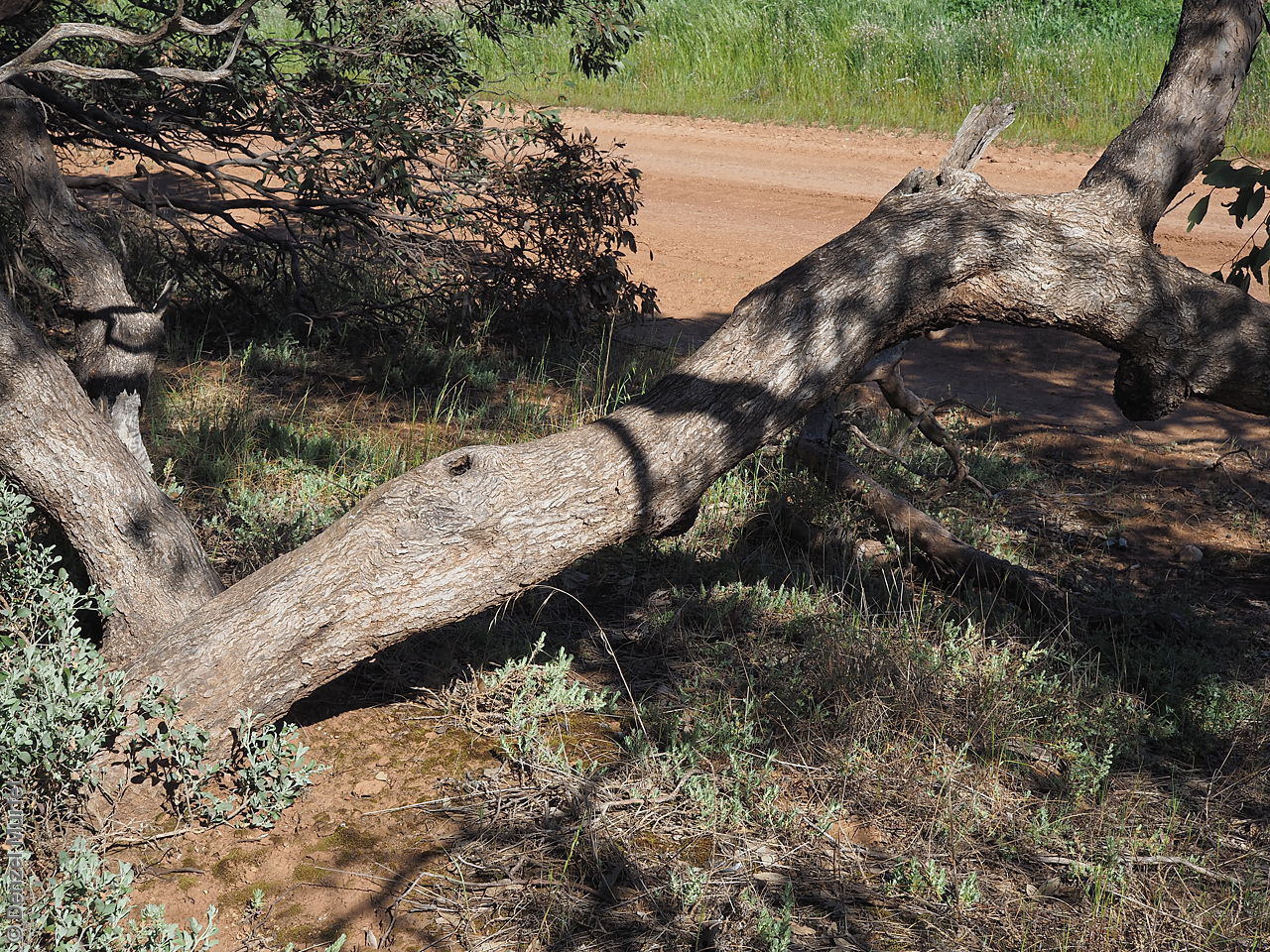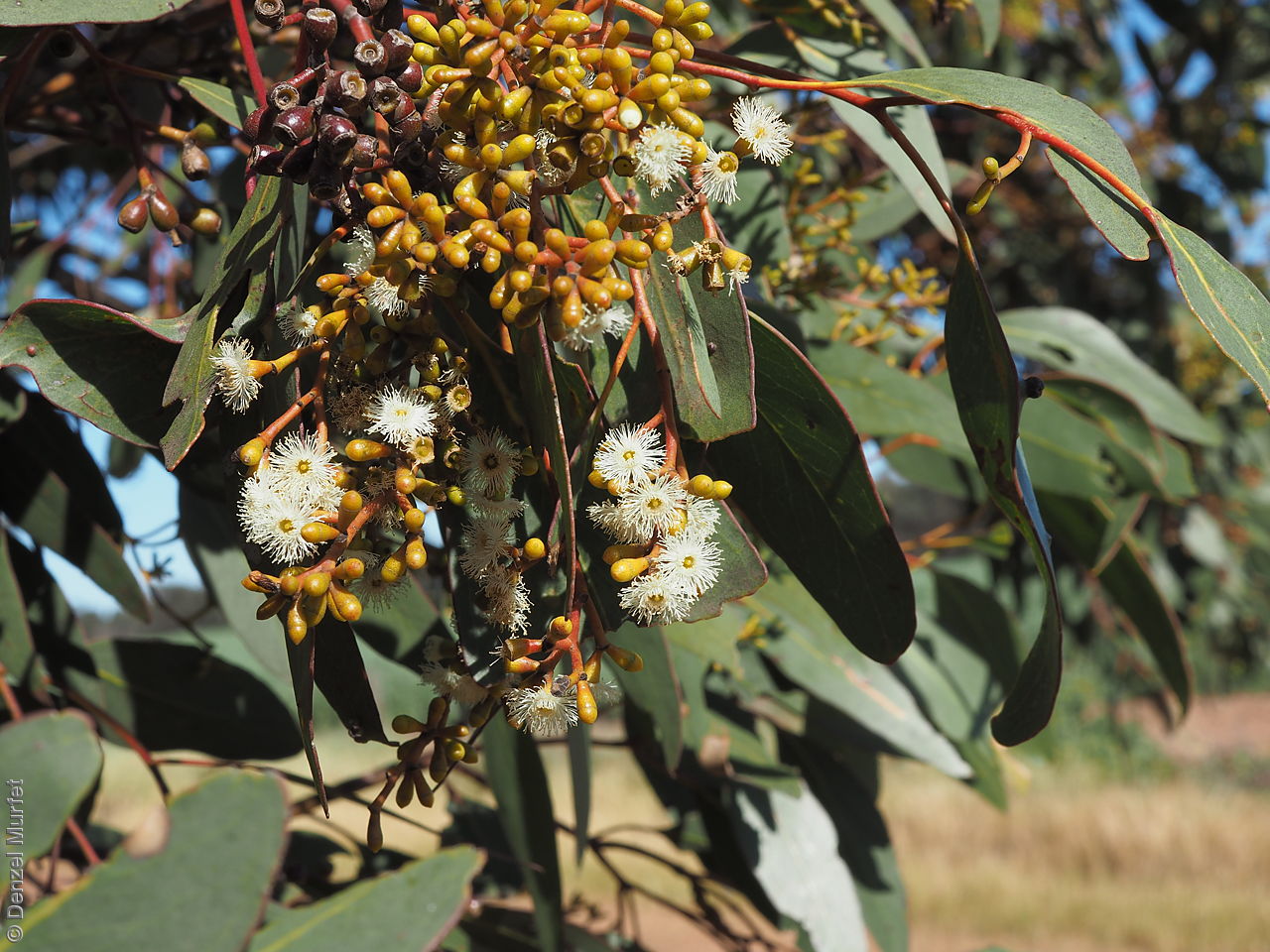



















Botanical art
Common names
Broad-leaf Box
Bull Mallee
Etymology
Eucalyptus from the Greek 'eu' meaning well and 'calyptos' meaning covered; alluding to the cap or lid which covers the stamens in the bud. Behriana named after Hermann H. Behr (1818-1904), a German-American doctor, entomologist and botanist, who collected in South Australia.
Distribution and status
Found on southern Eyre Peninsula, southern Flinders Ranges, northern Mount Lofty Ranges and upper South-east in South Australia, growing on heavy soils in slight depressions or in gently undulating terain. New South Wales and Victoria. Native. Rare in South Australia. Uncommon in New South Wales. Common in Victoria.
Herbarium regions: Flinders Ranges, Eyre Peninsula, Northern Lofty, Murray, Southern Lofty, South Eastern, Green Adelaide
NRM regions: Adelaide and Mount Lofty Ranges, Eyre Peninsula, South Australian Arid Lands, South Australian Murray-Darling Basin, South East
AVH map: SA distribution map (external link)
Plant description
Single- or multi-stemmed trees to 10 m high with smooth, off-white or greenish bark above, shedding in long strips and rough and dark-grey below. Juvenile leaves opposite or alternate, elliptic to broadly ovate. Adult leaves on petioles to 25 mm long, ovate to broadly lanceolate, glossy, dark-green, to12 cm long and 5.5 cm wide. Flowers in mainly axillaw panicles. Buds sessile or on pedicels to 1.5 mm long, narrowly obovoid to cylindrical, smooth, to 6 mm long and 3.5 mm, bud-cap conical or hemispherical, shorter than the bud-base. Flowers white. Flowering between July and January. Fruits are woody cylindrical or ovoid fruit to 5 mm long and 5 mm wide, with a narrow rim and disk, valves small, deeply enclosed. Seeds are light brown ovoid seed to 1.2 mm long and 0.7 mm wide. Seed embryo type is folded.
Seed collection and propagation
Collect seeds between January and December. Collect mature fruits that are dark and hard (difficult to break with a finger nail), with the valves un-open any time of year. Leave the fruits in a breathable container in a dry room for one to two weeks. This allows the valves on the fruit to open and release the seeds. Separate the seeds by placing all the materials into a bucket and shaking it to dislodge the seeds. Pass the material through a sieve to separate the unwanted material. The finer material will contain both seeds (soft) and frass (hard) usually distinguishable from each other but can be very similar in shape and colour. With finer sieves, the seeds can be separated from the frass but this is not essential for storage or propagation. Store the seeds with a desiccant such as dried silica beads or dry rice, in an air tight container in a cool and dry place. From four collections, the seed viability were high, ranging from 95% to 100%. Seeds are non-dormant, viable seed should germinate readily.
| Location | No. of seeds (weight grams) | Number of plants | Date collected | Collection number Collection location | Date stored | % Viability | Storage temperature |
|---|---|---|---|---|---|---|---|
| BGA | 10,600 (2.66 g) | 10 | 23-Nov-2006 | TST101 Murray | 1-Aug-2007 | 95% | -18°C |
| BGA MSB | 38,500 (7.71 g) 38,500 (7.71 g) | 25+ | 28-Sep-2006 | KHB62 Northern Lofty | 1-Aug-2007 | 100% | -18°C |
| BGA | 17,600 (2.89 g) | 17-Dec-2008 | KHB201 Flinders Ranges | 20-Jul-2009 | 100% | -18°C | |
| BGA | 24,000 (4.67 g) | 15 | 29-Apr-2009 | KHB257 South Eastern | 20-Jul-2009 | 95% | -18°C |
Number of plants: This is the number of plants from which the seeds were collected.
Collection location: The Herbarium of South Australia's region name.
% Viability: Percentage of filled healthy seeds determined by a cut test or x-ray.